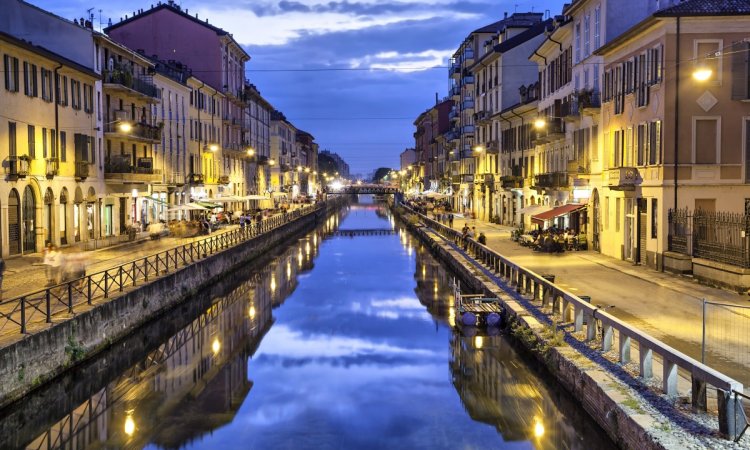
Italy is home to countless wonderful cities, and with an equally amazing rail system, visiting these locations is very easy. A surefire way to craft a memorable holiday is to seek out a little bit of the unknown. In this guide, we’ve assembled an eclectic list of five places to visit in one of Italy's best cities, Milan.
Lambrate: a factory district turns funky
If you're looking for things to do in Milan you need to check out Lambrate. This former industrial sector went quiet in the 1980s when most of the factories closed down. But it was reborn a few years ago when a young creative class repurposed old warehouses into artist lofts, design studios, and coworking spaces. A list of what to do in Milan must include its world-famous Design Week, held annually in April. Lambrate is a fantastic place to enjoy Design Week. Be sure to check out the two bars run by award-winning brewery Birrifico Lambrate.
Isola: linking tradition and modernity
Isola (Italian for “island”) is not actually surrounded by water but hemmed in as it is by railways and the Garibaldi train station, this unique neighborhood boasts a distinctive “urban island” character all its own. Over the past decade or so, modern ramen restaurants and exclusive designer shops have spring up all around its traditional botteghes and trattorias. Isola is a wonderful area for a stroll, with a bustling street market on Via Garigliano every Tuesday and Saturday, and some of Italy’s finest street art. No list of what to see in Milan would be complete without a glimpse of one of the many portraits of Arnold (Gary Coleman’s character from the cult TV hit Diff’rent Strokes) by Zibe, one of Milan’s most renowned artists.
Navigli: Venice isn’t the only town with canals
Centuries before Milan’s massive present-day sprawl, it was a fortified city, ringed with walls inside a moat-like system of canals. Most of these were covered in 1929, but the Naviglio Grande and Naviglio Pavese still remain, along with the artificial lake Darsena. The area around these landmarks is filled with hopping nightclubs and some of the best street food in Milan. The bike lanes that run alongside the canals are a popular way to take in the sights, to the point that they are sometimes overcrowded on weekends and holidays. For something a little more off the beaten path, there’s a third canal in the northeast, the Naviglio Martesana, designed by Leonardo da Vinci during his stay in Milan. It runs for almost 40 km to the Adda river — and you might notice large muskrat/beaver-like creatures swimming in it. These furry cuties are coypu, descended from escapees from fur farms in the early twentieth century.
Bicocca: from industrial hub to industries of culture
Formerly an important industrial area, the 21st Century has seen this neighbourhood slowly acquire a new, more creative vocation. It began in 2000, when an old tire factory was converted into the Arcimboldi theatre to host the Scala’s programming during the legendary opera house’s three-year renovation. It remains a great option for classical music or ballet aficionados, and ticket prices are far more affordable than La Scala.
Another hidden gem among Milan’s sightseeing treasures is Hangar Bicocca, a factory turned contemporary art gallery specializing in large-scale installations. Past works have included giant balloons, a suspended plastic film that invited visitors to walk out high above the floor, and rooms set to -30 degrees C. You’re sure to have a memorable experience, and there are free guided tours every Sunday at 5 p.m.
Chiaravalle- come for the abbey, stay for the cheese
Another top thing to do in Milan is visit the Parco Agricolo Sud Milano, a protected rural area of 47,000 hectares. There are farms, of course, but also two rivers, castles, villas, and woodlands. Of the many possible day trips from Milan, the short bus ride to the Chiaravalle district should be at the top of your list. It’s home to the beautiful 12th Century Chiaravalle Abbey, still inhabited by Cistercian monks and boasting a magnificent church tower rising more than 180 feet into the sky. The aforementioned monks have a tradition of manual labor, and one of their greatest accomplishments was the invention of Grana Padano cheese, which along with its cousin Parmigiano-Reggiano, is beloved by foodies around the globe.
There’s no shortage of things to do in Milan, especially if you’re up for the adventure of leaving the city center and discovering lesser-known districts where much of modern Milan’s energy, elegance and excitement resides.
What are you waiting for? Book your tickets now!


